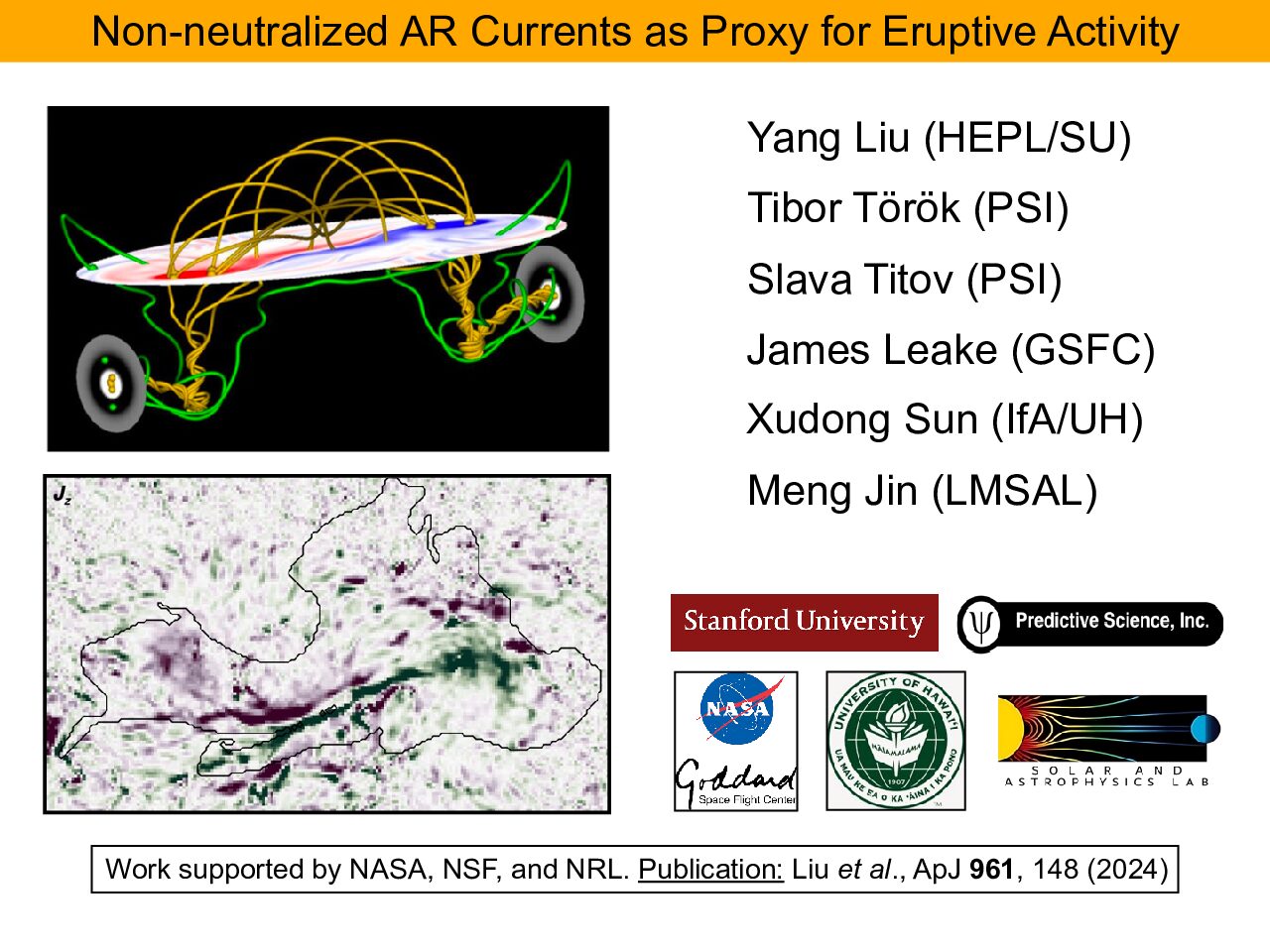Authors: Tibor Török (Predictive Science Inc.), Yang Liu (Stanford University), Viacheslav S. Titov (Predictive Science Inc.), James E. Leake (NASA Goddard Space Flight Center), Xudong Sun (University of Hawaii), Meng Jin (Lockheed Martin Solar & Astrophysics Laboratory)
Many proxies for assessing the eruptive activity of solar active regions (ARs) have been suggested,
mostly based on measurements of the photospheric magnetic field. Here we test the usefulness of
|DC/RC| (ratio of photospheric direct to return current) for assessing the ability of ARs to produce
CMEs, and compare it with the amount of shear along the eruptive section of the polarity inversion
line (PIL). We find that all source regions of eruptive flares have |DC/RC| > 1.63 and PIL shear >
45° (3.2 and 68° on average), tending to be larger for stronger events. Both quantities are on
average smaller for source regions of confined flares (2.2 and 46°), albeit with substantial overlap.
Many source regions, especially those of eruptive X-class flares, exhibit elongated direct currents
(EDCs) bracketing the eruptive PIL segment, typically coinciding with areas of continuous PIL shear
> 45°. However, a small subset of confined flares have |DC/RC| close to unity, very low PIL shear
(< 38°), and no clear EDC signatures, rendering such regions less likely to produce a CME. A simple
quantitative analysis reveals that |DC/RC| and PIL shear are almost equally good proxies for
assessing CME-productivity, and comparable to other proxies suggested in the literature. We also
demonstrate that an inadequate selection of the current-integration area typically yields a
substantial underestimation of |DC/RC|.


